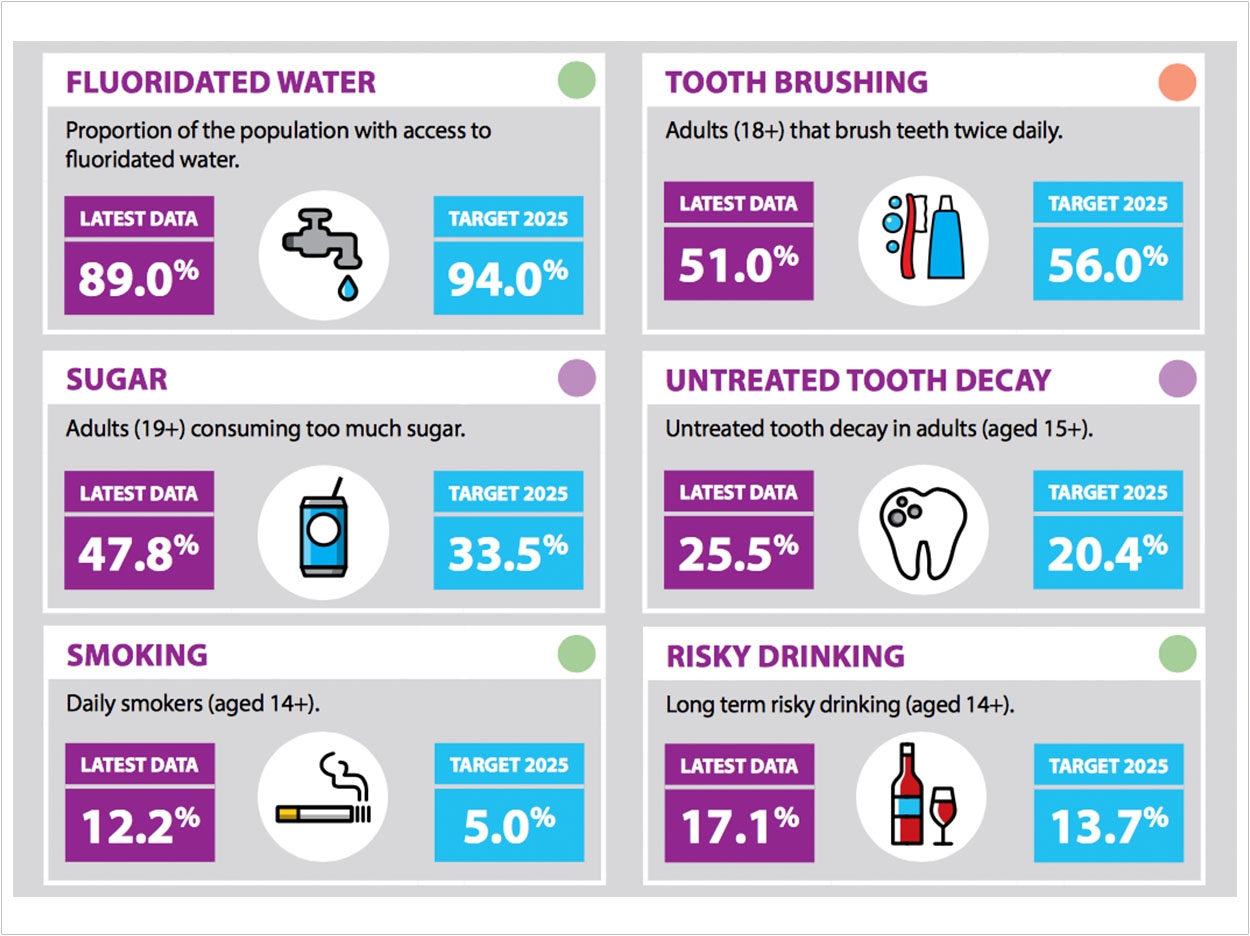
The Australian Dental Association and the Australian Health Policy Collaboration have launched Australia’s Oral Health Tracker to establish clear and measurable nationwide targets for oral health and to highlight the intrinsic link between oral health and preventable chronic diseases, conditions, and their risk factors.
“Oral problems are among the most common and costly conditions affecting Australians and our healthcare system,” said Hugo Sachs, BDS, MDS, president of the Australian Dental Association. “As dentists, we see firsthand the growing rate of tooth decay, gum disease, and oral cancer.”
The product of a collaboration between the country’s leading dental academics, researchers, clinicians, policy and public health experts, the Tracker is part of Australia’s Health Tracker series, which is a set of national report cards that chart progress in preventing and better managing disease.
The collaborators have developed 15 health improvement targets for children and young people and 15 for adults. This work is consistent with the World Health Organization Action Plan to prevent chronic diseases worldwide. Updates will be issued regularly through 2025 to show how the country is improving the state of its oral and general health.
For example, 19.8% of residents age 15 and older have gum disease, or periodontal pockets greater than 4 mm. The groups aim to reduce that to 16.8% by 2025. Also, 25.5% of those 15 and older have untreated decay, with a goal of 20.4% by 2025. And while only 9.9% of those over 15 have never experienced decay, the goal is to increase that to 10.9% by 2025.
“This oral health tracker shows very clearly that tooth decay is a very significant health condition in Australia. More than 6 million Australians have untreated tooth decay,” said Rosemary Calder, director of the Australian Health Policy Collaboration.
The Australian Dental Association notes that 90% of Australian adults have experienced decay, while more than 67,000 children under the age of 9 have been hospitalized for preventable oral health problems. Also, three out of four children and young people are consuming too much sugar, the group says, exacerbating decay as well as diabetes, obesity, and heart disease.
“Poor oral health in childhood is a predictor of disease in adulthood. Australia needs to recognize that oral health care is part of good healthcare and that access to dental care is a significant contributor to good oral and physical health,” said Sachs.
“Australians deserve a healthier future,” said Calder. “This is why it is critical for governments to address the underlying risk factors for chronic disease as part of their prevention agenda. The Australia’s Health Tracker series is an evidence-based way to monitor and report on how Australia is tracking towards better health.”
Related Articles
Nationwide Oral Health Survey Continues in Australia
Doctors Play a Greater Role in Dental Care Down Under
Australian Government to Promote Voluntary Use of Amalgam Separators












